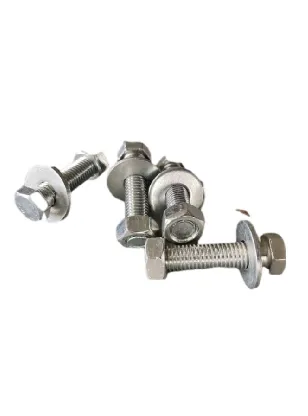loading...
- No. 9, Xingyuan South Street, Dongwaihuan Road, Zaoqiang County, Hengshui, Hebei, China
- admin@zjcomposites.com
- +86 15097380338
- Welcome to visit our website!
Installation Guide for FRP Grating in Various Applications and Environments
A Guide to FRP Grating Installation
Fiber Reinforced Polymer (FRP) grating has become a popular choice in various industrial applications due to its corrosion resistance, lightweight characteristics, and high strength-to-weight ratio. Whether you are using FRP grating for flooring, walkways, or platforms, proper installation is crucial for ensuring safety and performance. This article provides a comprehensive guide to the installation of FRP grating, outlining necessary steps and best practices.
Understanding FRP Grating
FRP grating is manufactured by reinforcing a polymer matrix with fibers, typically glass, creating a lightweight yet durable product. Unlike traditional materials like steel or wood, FRP doesn’t corrode, making it ideal for environments that are wet or chemically aggressive. It is also non-conductive, which adds to its appeal in electrical applications.
Preparation for Installation
Before beginning the installation process, it is essential to take appropriate measures to prepare the site. Start by ensuring that the area is clean and free of debris. This not only helps with installation but also improves the overall safety of the workspace. If existing grating or flooring needs to be removed, make sure to do so carefully to avoid damaging any surrounding structures.
Next, assess the structural integrity of the support framework where the FRP grating will be installed. Inspect beams, supports, and any other structures to ensure they can adequately support the weight of the grating and the anticipated loads. Any repairs or reinforcements should be addressed before proceeding.
Selecting the Right FRP Grating
Choosing the right type of FRP grating is essential for successful installation. Various types of grating, such as molded or pultruded, offer different benefits depending on the application. Consider factors such as load capacity, spacing between supports, and exposure conditions. Always consult the manufacturer’s specifications, which will provide critical information on load ratings and installation guidelines.
Tools and Materials Needed
Before installation, gather all necessary tools and materials. Common tools required for the installation of FRP grating include
- Measuring tape - Level - Circular saw or jigsaw (with an appropriate blade for cutting FRP) - Drill with a suitable bit for pilot holes - Fasteners recommended by the manufacturer (stainless steel or other corrosion-resistant materials)
frp grating installation

Having the right tools on hand ensures a smooth installation process
.Step-by-Step Installation Process
1. Layout Planning Measure and mark the layout of the FRP grating installation area. Use chalk or marking paint to define where each panel will be placed.
2. Cutting the Grating If necessary, cut the FRP grating panels to fit the designated area. Always wear protective gear, including gloves and safety glasses, during cutting.
3. Positioning the Panels Place the first panel onto the support structure. Ensure the grating is level and properly aligned with the marked layout.
4. Securing the Grating Once positioned, secure the grating using the recommended fasteners. It is typically advised to install fasteners at each support point, following the manufacturer’s guidelines regarding spacing and placement.
5. Installing Additional Panels Repeat the process for additional panels, ensuring each is properly aligned and securely fastened. Use a level frequently to ensure that all panels are flat and even.
6. Final Inspection After all panels are installed, conduct a thorough inspection to ensure everything is secure and meets safety standards. Pay attention to any loose fasteners, misaligned grating, or other potential issues.
Maintenance and Care
After installation, it is essential to maintain the FRP grating to prolong its life and maintain its safety. Regularly inspect the grating for signs of wear or damage, especially in high-traffic areas. Cleaning the surface with non-abrasive detergents can help remove any contaminants and maintain traction.
Conclusion
The installation of FRP grating is straightforward when following proper procedures and guidelines. By taking the time to prepare adequately and adhering to best practices, you can ensure a safe and efficient installation that meets your specific needs. With its exceptional durability and low maintenance requirements, FRP grating can provide a long-lasting solution for various applications in challenging environments.
-
The Rise of FRP Profiles: Strong, Lightweight, and Built to LastNewsJul.14,2025
-
SMC Panel Tanks: A Modern Water Storage Solution for All EnvironmentsNewsJul.14,2025
-
GRP Grating: A Modern Solution for Safe and Durable Access SystemsNewsJul.14,2025
-
Galvanized Steel Water Tanks: Durable, Reliable, and Ready for UseNewsJul.14,2025
-
FRP Mini Mesh Grating: The Safer, Smarter Flooring SolutionNewsJul.14,2025
-
Exploring FRP Vessels: Durable Solutions for Modern Fluid HandlingNewsJul.14,2025
-
GRP Structures: The Future of Lightweight, High-Performance EngineeringNewsJun.20,2025
